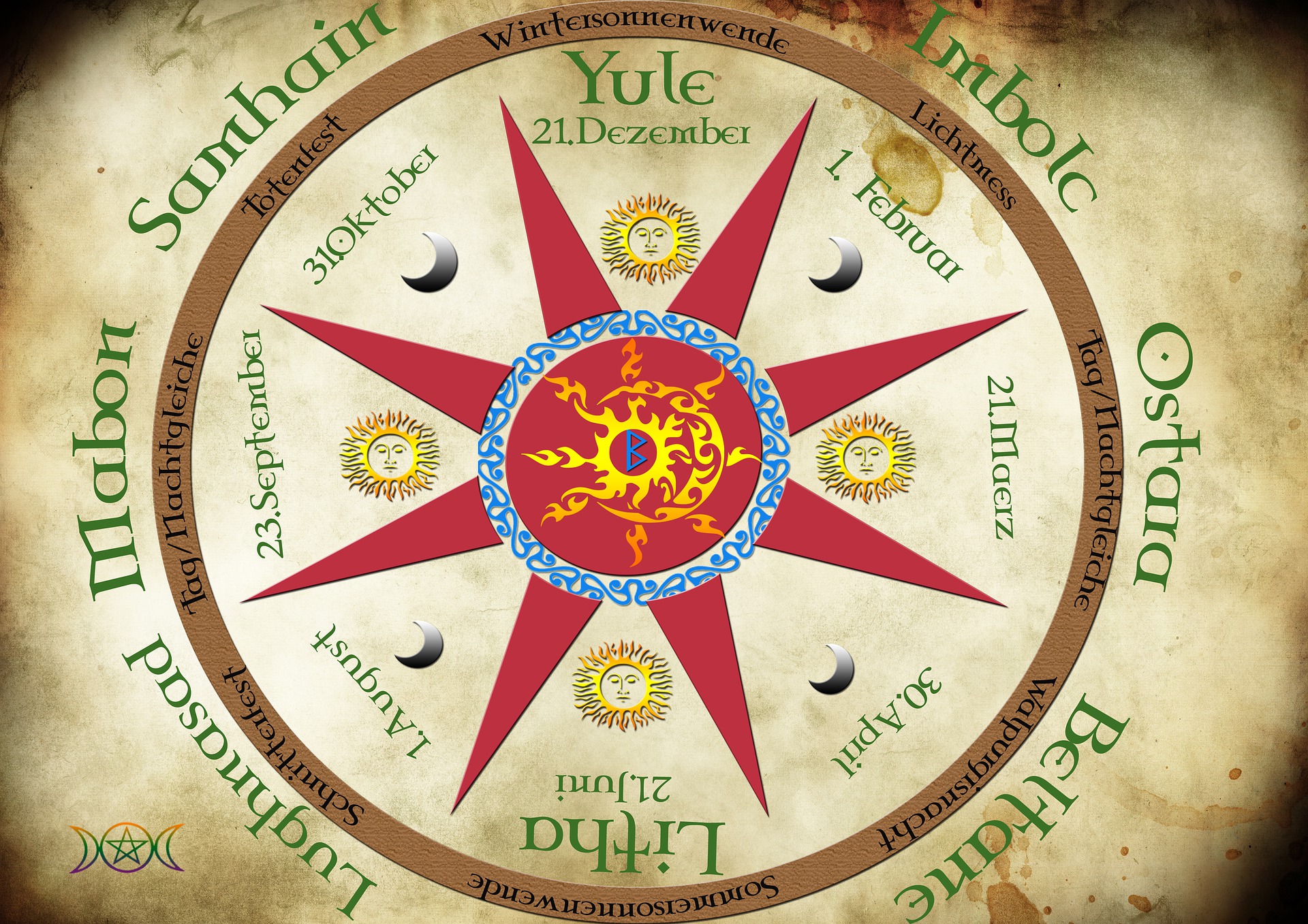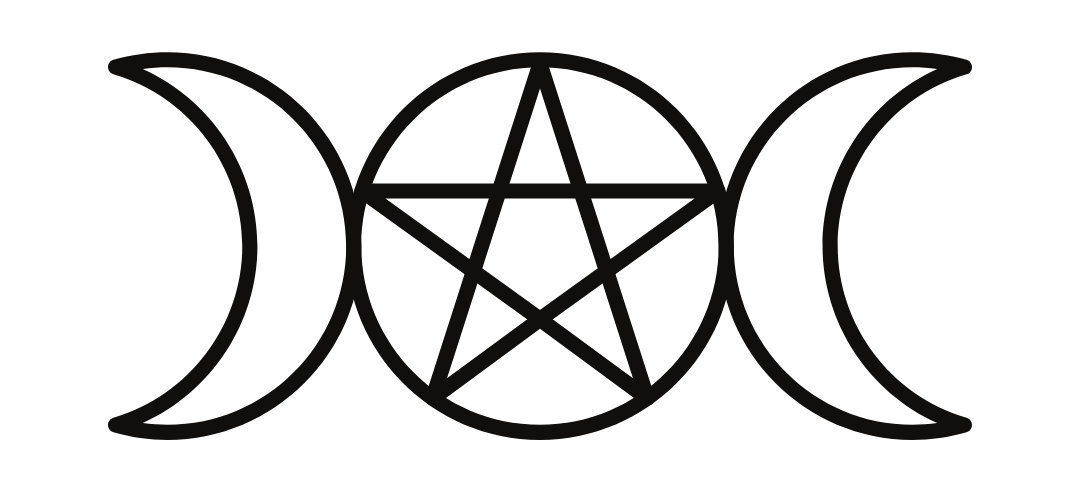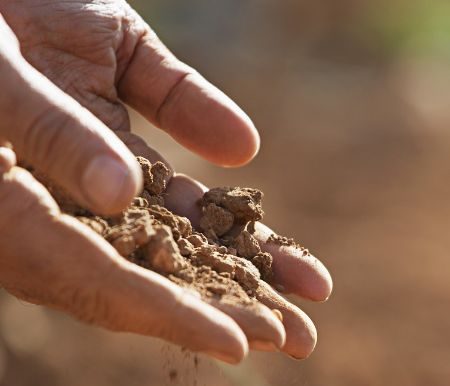
Samhain, Halloween, Wicca: connecting with the seasons:
Can you feel the air getting crisper? We have entered the darker half of the year at Equinox. All the harvests are in and nature is preparing for shorter and colder days.

The trees are starting to put on their beautiful red-toned apparel and the animals are starting to hoard food. For us, it is also time to prepare, to reflect on our harvests. We may be feeling a bit of melancholia and nostalgia, but don’t worry October is also the month of the fire festival, Samhain… So let’s talk about it.
Connecting with the seasons
Welcome back to our ‘Wheel of the Year’ series. A series that covers the various festivals that celebrate the seasonal cycles and link it to food. Last time we explored midsummer – also known as the summer solstice. This time, we will be covering one of the four cross-quarter festivals, Samhain, which occurs at the midpoint between the autumn equinox (Mabon) and the winter solstice (Yule).

What are cross-quarter fire festivals?
Let’s refresh our minds and talk a bit about the four cross-quarter festivals before we delve deeper into Samhain. Here is a list of those fire festivals:
As mentioned above, Samhain, like the other 3 cross-quarter days, occurs at the midpoint between an equinox and solstice. They mark a transition period in the seasons, as well as the celestial events. Like the solstices and equinoxes cross-quarter are cause for celebrations in Paganism.
- Imbolc (1st February)
- Beltaine, or May Day (1st May)
- Lughnasadh (1st August)
- Samhain (31st October -1st November)
Why are they called fire festivals? Well simply because they are celebrated around fire, and, often, the rituals include fire which we will explore a bit later.
Samhain: Pagan New Year
The duality of God/Goddess
The Wheel of the year is centred around the duality and marriage of the God and Goddess who go through different states throughout the cycle of the year. This cycle is the unfolding of the birth and death of the Sun throughout the year.

The Goddess – also known as the Triple Moon Goddess – starts the Wheel of the year as the Maiden throughout the months of Spring, and becomes the Mother during the months of Summer before reaching the darker part of the year as the crone. Her cycle is aligned with the cycle of the moon.
Conceived during Ostara (Spring Equinox) the ‘Child of Promise’ is born – as the Sun Child – during Yule (Winter Solstice) from the Goddess as the mother/crone. As the Goddess reaches its maiden state, the Sun Child grows more powerful at Imbolc (Feb, 1st) as it prepares to defeat darkness by the Spring Equinox. The Sun Child – now the Child of Light, Sun King or Mabon – dies, along with the Goddess of harvest, as the Crone by the Autumn Equinox. Both are returned to the earth during the fire festival Samhain, where pagans would celebrate the end of the cycle, until Yule, when the Sun Child is reborn.
What is Samhain?
Now, let’s get into the fundamentals. You might be tempted to pronounce it ‘sam; hayn’, but it’s actually pronounced ‘sa:win’. You probably know it under its modern name, ‘Halloween’ or ‘Wicca’.
Like the other festivals celebrated throughout the year, Samhain is a pagan celebration or Druid festival and it is the third and final fire festival of the year. It is of Celtic origin – it is even considered the original Celtic New year. Why? Because they believe that darkness precedes light. It is the end of the cycle of birth and death, and just like nature, everything goes dormant.
“Darkness precedes light. It is the end of the cycle of birth and death, and just like nature, everything goes dormant.”
In other words, what happens at Samhain is the opposite to Beltane as it is on opposite sides of the wheel. Summer has ended and the cattle return from the summer pastures and return home for the winter months.
The Sun King who died at Mabon (Autumn Equinox) is returned back to the land until the Winter Solstice. The Goddess, now crone, mourns and waits until the cycle starts again by Yule for his rebirth.

Remembering passed ones is said to be easier at this time as the veils between the two worlds are the thinnest during Samhain. We embrace the dark half of the year as the Sun King travels through the underworld, descending into darkness, and the Crone has reached its dark aspect. This is a time of remembrance which is also a time to reflect on death, like honouring ancestors and celebrating death as a hopeful sign since rebirth always follows. In the same way that light is often born from darkness.
“The seeds of life buried underground, the old self is shed and reflected upon as the wheel turns to winter.”

With the seeds of the God and Goddess in the earth and darkness wrapped the earth, the chance to reflect on the year passed and the possibility for new beginnings arises. As we wait for the new year to begin we can take the time, like nature, to slow down and prepare. But, it is also a time to process grief, loss, as well as the positive things that have occured. But, more about how to celebrate Samhain in your own way later.
What are the key symbols of Samhain?
All festivals have their own sacred plants that represent that time of the year. For Samhain those are:
- Rosemary for remembrance and connecting with ancestors
- Angelica, Elder, and garlic to keep the evil away
- Yew which represents darkness, death, and eternity
- Dandelion root for cleansing
- Mugwort for visioning and dreaming but also comfort
- Valerian for self-acceptance
Each plant has special properties and history. Find out more on this website.


The celebrations
How was Samhain celebrated
Samhain is the original pagan Halloween. Although the celebrations have changed over the years it is still interesting to see how it was done centuries ago.
“Fire has remained central as the symbol of the light that illuminates the winter darkness and acts as a guide throughout the winter months.”

There are many ways to celebrate it. And, as one of the important dates on the Wheel of the Year, Samhain was cause for great festivities. As all the harvests are in and nature is going dormant, Druids and other believers would prepare for the next year by sacrificing animals. During those ceremonies, Druids would dress up in animal skins and animal headwear to mark Samhain.
Although celebrations may vary, and have changed over the years, fire has remained central as the symbol of the light that illuminates the winter darkness and acts as a guide throughout the winter months. Like the Sun King, it is time to begin a journey in darkness to reach for the light on the other side. That’s why most of the rituals are done around the fire. Actually, cattle would come down from their summer pastures and walk between the fires lit for Samhain.
Reflection is central to the wheel turning and the seasons changing. Reflecting on the seasons’ past is key to moving forward as humans, as well as a collective. Additionally to reflection, Samhain is also a time for remembrance with death at its core – whether the death of a previous self or that of loved ones. As animals are being sacrificed, the seeds of life buried underground, the old self is shed and reflected upon as the wheel turns to winter.
Celebrating Samhain today
Samhain, like the other festivals throughout the year, is centred around the cycles of nature and its seasons. Seasons can be hard to distinguish, today. With access to all the vegetables and fruits all year round we may forget to look at the cycles of nature, and care for it. So, this time of the year, when, traditionally, the last harvests are in and take our knitted sweaters out of the cupboard, let’s reflect and focus on what the autumn season means.
Here, at the Open Food Network UK we care immensely about nature and the world around us. We embrace knowledge and always welcome new ways of looking at the world. Although paganism is more of an ideology, its practices were strongly linked with the cycles of nature and used in farming. Let’s embrace this reset of nature which can give our soils some rest to welcome the seeds for the next seasons.
“Appreciating nature and what it does for us can bring us a lot of satisfaction and help us understand why we should love and protect it.”

Things you can do
Connecting with ancestors and inner self
Our lineage, which stretches out behind us, is filled with gifts from our ancestors – from skills and knowledge to passion and dreams. We are its legacy and this is the opportunity to reflect and remember those that came before us. Let’s accept their presence among us.
Connecting with our inner selves

Travelling inwardly is something brave. It can be hard and it is not always pleasant. But, sometimes it is a great way to find answers. Earlier, the sacred plants were mentioned. Well some of their properties can help with visioning and clearing the mind to help us journey inward. Closing your eyes, and letting the winter darkness nurture us back to life for spring.
Candle ceremony
The candle ceremony can be a great way to do that. It is a simple ritual that does not require much and can be shared with friends and family. Like death and birth, it starts in darkness, reaches light, and ends in darkness again.
All you need are small candles or small night lights that you place in a heat proof container – this can be sand or a baking tray. This can be done outside if the weather permits it or inside if it’s too cold or windy. Then, turn off any lights and sit in the darkness, accepting it’s embrace; let the memory of your ancestors fill your mind or you can call them out by saying:
“We welcome our departed loved ones into this home and honour your presence amongst us” – the Goddess and the Greenman

As you sit in a circle, let each person remember someone who has passed by telling something about them, and then, lighting a candle. Once everyone has gone, you will be left with a beautiful burst of light in the centre. You can end the ceremony by giving thanks and letting the candles burn until the end.
Connecting with nature

Above, we mentioned ways to connect with our inner selves. This can also be an opportunity to focus on our connection with nature. As we prepare for the winter months, let’s take a breath. Although this period of the year can be hard, connecting with nature can be great for your wellbeing and health. Appreciating nature and what it does for us can bring us a lot of satisfaction and help us understand why we should love and protect it.

Want more?
To keep in the loop with the follow ups in this series (and never miss another opportunity to celebrate the seasonal cycles!) sign up to our newsletter here.
Written by Djenai Delerue
Member of the Open Food Network UK Coordinating Circle, Stewardship Circle and Communications circle

